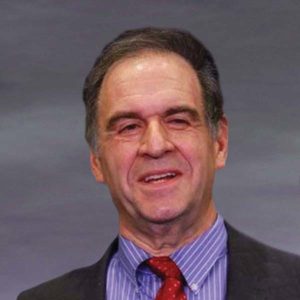 In 1979, the industrialist George Weyerhaeuser told me, “We have a license to operate from society, which can be revoked if we violate its terms,” referencing a corporate social responsibility movement popular at the time. BlackRock CEO Larry Fink’s 2018 letter to CEOs is a new clarion call for CEO attention to a similar sentiment, rebranded as ESG (environmental, social, governance).
In 1979, the industrialist George Weyerhaeuser told me, “We have a license to operate from society, which can be revoked if we violate its terms,” referencing a corporate social responsibility movement popular at the time. BlackRock CEO Larry Fink’s 2018 letter to CEOs is a new clarion call for CEO attention to a similar sentiment, rebranded as ESG (environmental, social, governance).
This mega-investment firm manages $6 trillion in investments through pension funds, mutual funds and exchange-traded funds, ranking it as the largest investor in the world—a platform that makes Fink hugely influential in governance dynamics.
In Fink’s words, “Society is demanding that companies, both public and private, serve a social purpose. To prosper over time, every company must not only deliver financial performance, but also show how it makes a positive contribution to society.”
It’s not a new argument. From utopian 18th-century industrialists to the 1970s founders of the Business Roundtable (BRT), many have argued that doing good is not antithetical to doing well. While the BRT has fluctuated, the philosophy is evident in the practices of progressive business leaders like Howard Schultz of Starbucks; Ron Shaich of Panera; Indra Nooyi of PepsiCo; as well as Larry Page and Sergey Brin of Google/Alphabet.
“CEOs responding to Fink’s call to action must walk a fine line, watching for often-overlooked execution pitfalls in their pursuit of virtue.”
In calling on today’s businesses, Fink referenced the need to fill a void. “Society increasingly is turning to the private sector and asking that companies respond to broader societal challenges,” he wrote. TPG Capital’s James Coulter agrees: “It is time for us to engage in a social mission.”
But, investor Sam Zell’s response to BlackRock was to ask, “Who made Larry Fink God?” As Chicago economist Milton Friedman famously decried in 1970, “The only responsibility of business is the bottom line!” Pioneering investor activist Nell Minow has also urged, “Don’t give our money to the opera and your favorite museum. Give us the business profits back in dividends, and we’ll decide what causes to support with our money.”
Clearly, CEOs responding to Fink’s call to action must walk a fine line, watching for often-overlooked execution pitfalls in their pursuit of virtue. The ESG “debate gap” requires ESP (extra sensory perception) regarding these key caveats:
Timeframe Traps. The payouts may not be in today’s stock price. Even skeptic Friedman noted “it may well be in the long run interest of a corporation… [to] devote resources to providing amenities” to the community. Michael Barnett and Robert Salomon’s research in the Strategic Management Journal shows a strong relationship between ESG and financial performance.
Philanthropic Focus. Instead of dabbling in support of the CEO’s favorite pastime, Minow supports ESG moves that reinforce the brand and “align with your company’s direction.”
Constituent Conflict. Longstanding CSR funds like Domini Social and Calvert have very different priorities among sustainability, health, product safety, work practice and governance cultures.
Greenwashing Returns. With the ESG fund entry of Janus and other activists notorious for short-term priorities, we are reminded of the pre-emptive expropriation of “sustainability” by firms such as BP before the revelation of its massive misconduct.
Mindless Metrics. Even Fink’s BlackRock has made misguided calls, voting with avaricious activists based on mechanical governance checklists, violating its own better-informed expert judgment. Like the Heisenberg Principle in physics, they’ve confused the phenomena with its measurement tools.

Chief Executive Group exists to improve the performance of U.S. CEOs, senior executives and public-company directors, helping you grow your companies, build your communities and strengthen society. Learn more at chiefexecutivegroup.com.
0

1:00 - 5:00 pm
Over 70% of Executives Surveyed Agree: Many Strategic Planning Efforts Lack Systematic Approach Tips for Enhancing Your Strategic Planning Process
Executives expressed frustration with their current strategic planning process. Issues include:
Steve Rutan and Denise Harrison have put together an afternoon workshop that will provide the tools you need to address these concerns. They have worked with hundreds of executives to develop a systematic approach that will enable your team to make better decisions during strategic planning. Steve and Denise will walk you through exercises for prioritizing your lists and steps that will reset and reinvigorate your process. This will be a hands-on workshop that will enable you to think about your business as you use the tools that are being presented. If you are ready for a Strategic Planning tune-up, select this workshop in your registration form. The additional fee of $695 will be added to your total.

2:00 - 5:00 pm
Female leaders face the same issues all leaders do, but they often face additional challenges too. In this peer session, we will facilitate a discussion of best practices and how to overcome common barriers to help women leaders be more effective within and outside their organizations.
Limited space available.

10:30 - 5:00 pm
General’s Retreat at Hermitage Golf Course
Sponsored by UBS
General’s Retreat, built in 1986 with architect Gary Roger Baird, has been voted the “Best Golf Course in Nashville” and is a “must play” when visiting the Nashville, Tennessee area. With the beautiful setting along the Cumberland River, golfers of all capabilities will thoroughly enjoy the golf, scenery and hospitality.
The golf outing fee includes transportation to and from the hotel, greens/cart fees, use of practice facilities, and boxed lunch. The bus will leave the hotel at 10:30 am for a noon shotgun start and return to the hotel after the cocktail reception following the completion of the round.